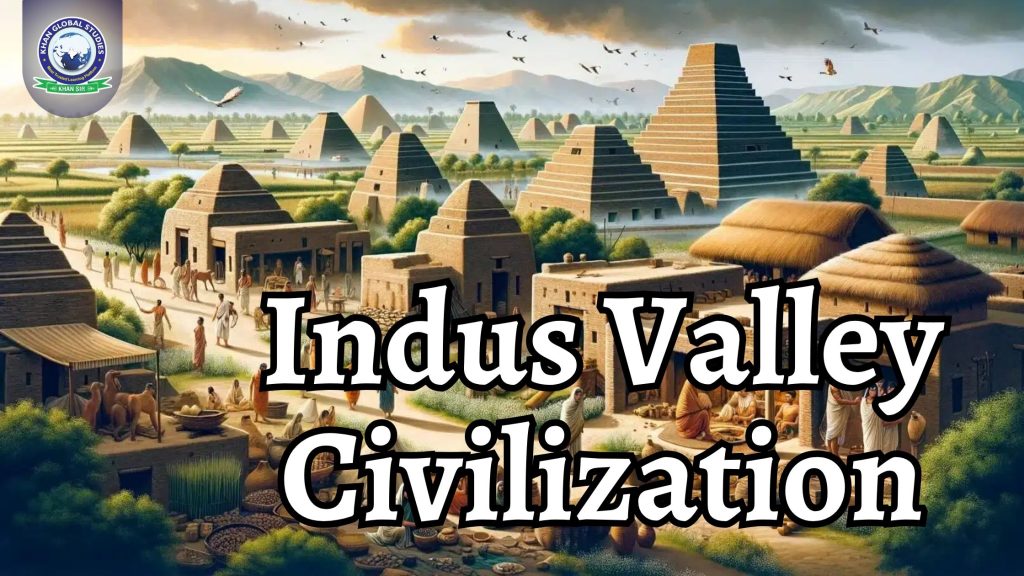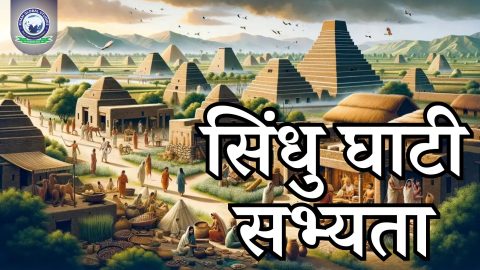20 September 1924 proved to be a milestone in the history of Indian archaeology. On this day, the discovery of the Indus Valley Civilization was officially announced in the Illustrated London News. This discovery provides a new perspective to ancient Indian history. Renowned archaeologist Nayanjot Lahiri has described in detail the history of this great discovery in his book Finding Forgotten Cities: How the Indus Civilization Was Discovered. The book is co-published by Ashoka University and Permanent Black and is dedicated to the centenary of the discovery of the Indus Civilization.
Introduction
One of the oldest civilizations in the world is the Indus Valley Civilization, also known as the Harappan Civilization. It developed between about 3300 BC and 1300 BC. This civilization flourished mainly along the Indus River in modern Pakistan and western India and is considered one of the most advanced and organized civilizations of its time.
The Indus Valley Civilization had several important centers, including Harappa, Mohenjo-daro, Kalibangan, Lothal, Dholavira, and Rakhigarhi. In 2014, Bhirdana was identified as the oldest known city of this civilization, dating back to 7500 to 6500 BCE.
How did the Indus Valley get its name?
This civilization flourished along the Indus River Valley, so it was called the Indus Valley Civilization. It is also known as the first known urbanization event, so it is called the first urban civilization. Due to the extensive use of bronze, it is also called the Bronze Age Civilization.
Discovery
More than 1400 sites of the Indus Valley Civilization have been discovered, of which 925 sites are located in India. Interestingly, about 80 percent of these sites have been found near the Indus River and its tributaries. Despite many discoveries, only 3 percent of these sites have been excavated.
This civilization remains interesting for historians and archaeologists even today, as it provides important information about early urban life, trade and culture.
Sites and Materials obtained from there
- In the 7th century, when people in Punjab dug the ground to extract bricks to build houses, ready-made bricks were found. It was considered a divine miracle at that time and these bricks were used to build houses. However, in 1826 Charles Mason first identified this ancient civilization. Later, in 1856, Alexander Cunningham conducted a detailed survey of this civilization.
- In the same year, during the construction of the railway line between Karachi and Lahore, the Burton brothers informed the government about the Harappa site. Following this discovery, the Archaeological Survey of India (ASI) was established in 1861 under the leadership of Alexander Cunningham.
- In 1902, John Marshall was appointed Director General of ASI by Lord Curzon, leading to significant progress in the excavation work. A turning point came when Flett wrote an article that shed light on this ancient civilization. In 1921 Daya Ram Sahni excavated the site of Harappa, giving this civilization the name of Harappan Civilization. Around the same time Rakhaldas Banerjee discovered Mohenjodaro.
- Information about the initial excavation phases after the discovery of the Indus Valley Civilization became available in the late 1920s. The remains of the Indus Valley Civilization were first discovered in the 1920s. The major sites of this civilization include Harappa (which is located in the Punjab province of Pakistan) and Mohenjodaro (in the Sindh province of Pakistan). Additionally, sites in India such as Kalibangan (Rajasthan), Lothal (Gujarat), Rakhigarhi (Haryana) and Dholavira (Gujarat) are also important. Excavations were carried out at major sites such as Mohenjodaro and Harappa, the reports of which were published in 1931 and 1940 respectively.
- These reports included archaeological and architectural data as well as drawings, maps and scientific analysis of the objects found. These included pottery, metal objects, seals, precious jewellery, food remains and other important materials.
- Excavations at these sites have revealed remains of huge city structures, drainage systems, brick houses and trading centres. This shows that the Indus Valley people were adept at advanced urban planning, architecture and water management systems. The huge bathing pools and systematic drainage system found at Mohenjo Daro are evidence of its advanced technological capabilities.
Features of the Civilization
The uniqueness of the Indus Valley Civilization
Marshall also said in his report that during the excavation of Mohenjodaro and Harappa, some objects were found which were related only to Indian culture. Such as many types of rings and objects with phallic symbols, which indicate that phallic worship was also prevalent in the civilization of that time. These symbols point us towards the ancient religious traditions of Indian culture, which can still be seen in Indian society today.
The major features of the Indus Valley Civilization include:
- Urban planning – The planning of the cities of this civilization was based on a grid system, with roads cutting each other at right angles. With this advanced planning, there were clear locations for houses and business establishments in the cities.
- Drainage system – The people of the Indus Valley had developed an excellent drainage system. Their cities had drains and canals made of bricks, which ensured that the water drained out properly and there was no waterlogging.
- Script and writing – This civilization had its own script, which has not been fully deciphered till now. The Indus script still remains a mystery and efforts are on to decipher it.
- Trade and economy – The Indus Valley Civilization was rich in trade and commerce. Its people traded with various regions, including distant areas like Mesopotamia. Trade seals and objects found in evidence indicate that this civilization was part of a large trade network.
- Religious and cultural life – Although not much information is available about the religion and culture of the Indus Valley Civilization, the statues and symbols found in the excavation indicate that they probably worshiped the Mother Goddess and respected various forms of nature.
Excavation and its Controversies
The decline of the Indus Valley Civilization began gradually after 1900 BC. Historians disagree on the reasons for its decline. Some experts believe that environmental changes, such as changes in the flow of rivers or drought, may have been the main cause of its destruction. At the same time, some others believe that external invasions or socio-political problems may also have caused the collapse.
According to information obtained from inscriptions, many ideological differences emerged during the excavation. In the early stages of the excavation, John Marshall gave instructions about the strategy and management of the excavation. He told K.N. Dixit and Daya Ram Sahni how the trenches should be drawn and in which direction the digging should be done. However, Sahni and Dixit questioned Marshall’s instructions and disagreed with him on many matters, especially when it came to the ‘Indo-Sumerian’ nomenclature. Sahni had questioned Marshall about the snake figurine and the peepal tree seal found in Harappa, which led to the need to reconsider the relationship between Indian and Sumerian civilizations.
Sahni had found a large conch spoon in Harappa, which was used in Hindu rituals. This spoon is called “Argha” in Sanskrit and is used for offering water. Sahni told Marshall about it and linked it to Indian rituals. Similarly, Dixit underlined the difference between Indian and Sumerian writing, where Sumerian lines were vertical while Indian writing ran from right to left. Abandonment of the name ‘Indo-Sumerian’ Based on the observation of Dixit and Sahni, Marshall concluded that the similarities between the Sumerians and the Indus Valley Civilization were limited to trade or cultural relations and were not due to similarities in culture. Therefore, he abandoned the term ‘Indo-Sumerian’ and accepted it only as ‘Indus Civilization’. During a small archaeological exhibition in 1926-27, Marshall said that despite the Indus Civilization having a close relationship with the Sumerian Civilization, these two civilizations were different due to their uniqueness.
Condition of Indus Valley Civilization in Today’s Time
In today’s time, the sites of the Indus Valley Civilization continue to be excavated and studied. However, many of these sites are slowly getting damaged due to environmental and man-made problems. Many sites in Pakistan and India are now under threat due to the expansion of modern cities and agriculture.
Also, some sites are not being properly maintained despite conservation efforts. Many historical sites are also deteriorating due to climate change and pollution. Despite this, Indian and international archaeologists are constantly working to save the remains of this civilization and highlight their importance.
Conclusion
The Indus Valley Civilization is an important heritage of human history, the discovery and study of the Indus Valley Civilization is still an important field for archaeologists and historians, which influenced many dimensions of urbanization, architecture, trade and cultural development. The advanced technology and urban system developed by it are inspirational for modern society. Although the remains of this civilization are getting damaged over time, efforts are constantly being made to preserve it keeping in mind its importance.
This civilization told us how advanced city structures, trade relations and cultural heritage were rich in ancient India. Although many aspects of the civilization were revealed by early excavations and reports, some aspects still remain untold that need to be understood through epigraphy and future excavations.





